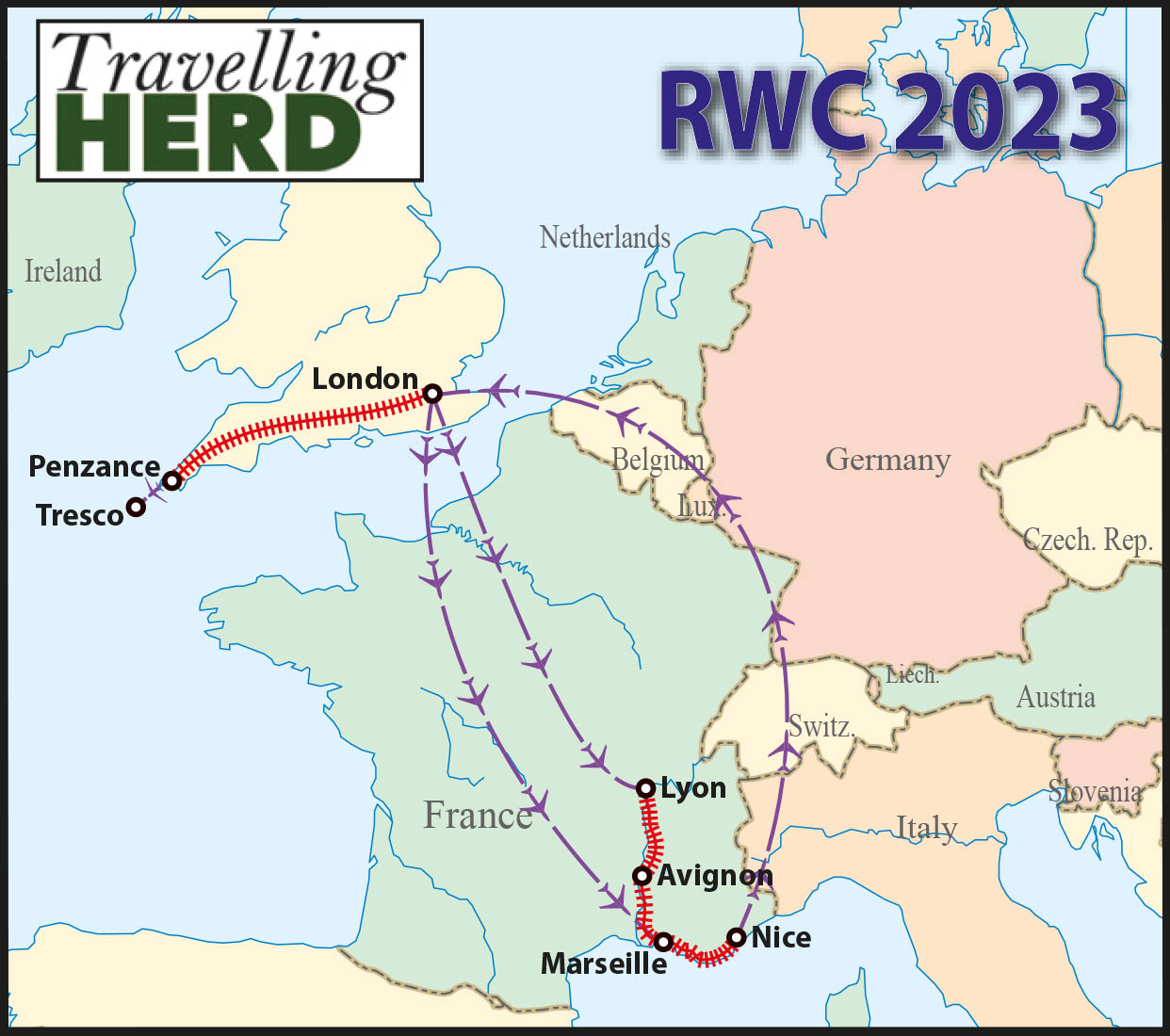Read this blog: The one where French rugby fans share their rillettes
Tuesday 19th to Friday 22nd September 2023
Any journey to or from the Scillies is time consuming and it is even more so if you have to go beyond the UK and get to the south of France. There was low cloud as we left Tresco and it was even lower when we arrived in Penzance. One fellow passenger had told us that they had once reached the mainland and still turned back because of fog. We were really not sure whether the cloud would shortly be classed as fog and prevent us from landing.
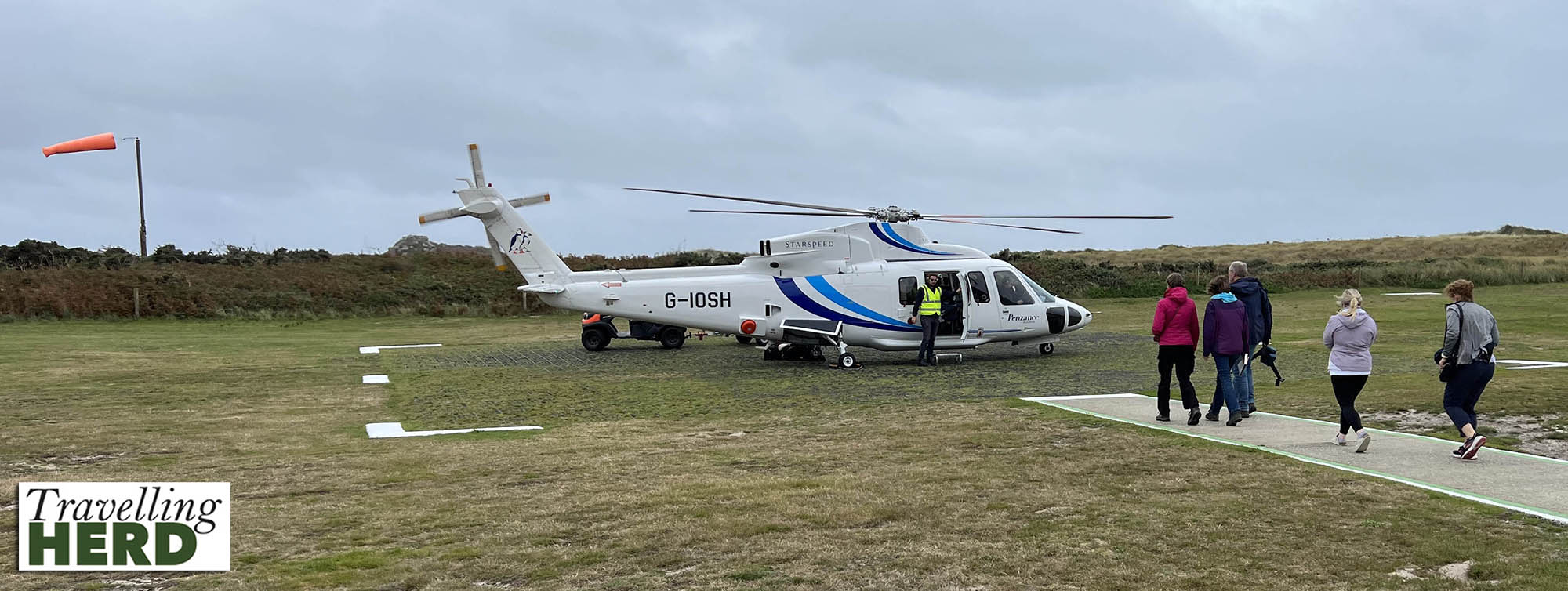
But thankfully we landed safely on the mainland and Scilly Parking provided a very reliable taxi service between the heliport and the station in time to catch our scheduled train, despite slight flight delays. We got off at Reading to catch the extended Elizabeth Line to Heathrow. It seems very strange to be on a tube line so far from the capital.

We stayed overnight at Heathrow ready to catch an early flight to Marseille. As usual Robert had researched and planned the journey from the airport into the Vieux Port area and had pre-booked train tickets from the Vitrolles Aéroport Marseille Station. Unfortunately, although the station has the word ‘aéroport’ in its name, you still need to catch a bus between the airport and the station. And, much like the buses to our village at home, the train service only seems to run once an hour. There is also an airport/city shuttle bus service which costs €10 per person. We paid €1.80 for the bus and €5.70 for the train each so although the trip cost us marginally less per person, with hindsight we would recommend catching the shuttle bus. Once in Marseille, Robert went to the Loch Ness bar to watch the Italy vs Uruguay match while Matilda caught up with family via FaceTime. She joined Robert after the match where he seemed to have found some new best friends.
Having been married for 33 years, Matilda is becoming increasingly concerned that Robert regularly attracts the admiration of those he meets in bars. Robert’s international fans now include a trans lady in New Orleans who admired his ‘sparkly eyes’; a barman at the Turk’s Head’ who admired his Hawaiian shirt so much he wanted to buy it and a young Welshman in a Scottish bar in Marseille who admired his ‘jawline’. Matilda could not comprehend how his jawline could be visible behind his beard but that might just be sour grapes.
Later, as we sat under the canopy outside a restaurant eating a late meal, the skies opened and the street drains could not cope with the flooding. We paddled through the streets back to our hotel.
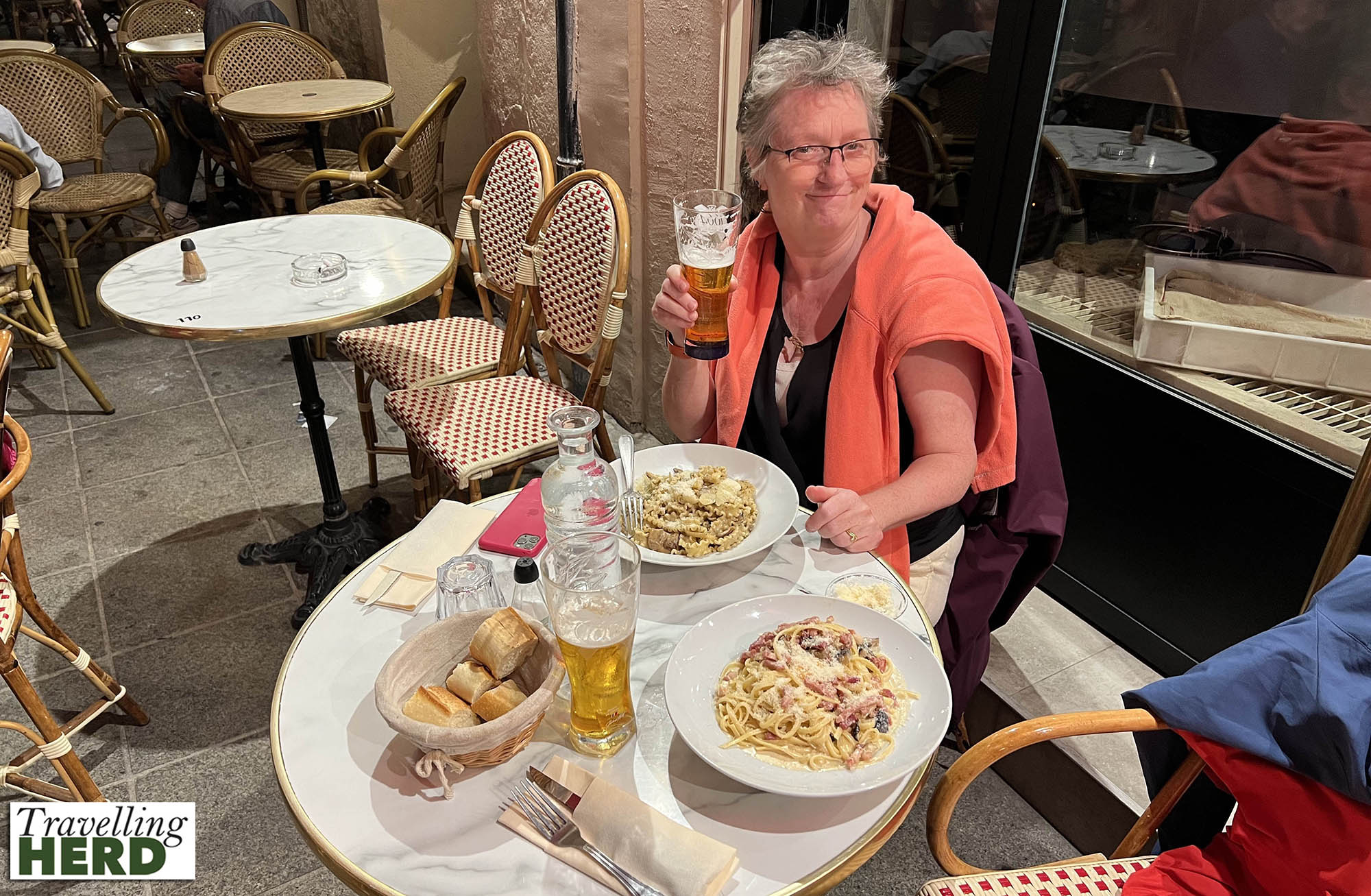
The following morning we had decided we would go to MuCEM [Musée des Civilisations de l’Europe et de la Méditerranée], which had been highly recommended by Matilda’s university friend, Wendy. We walked along the front towards the Cathédrale Basilique Sainte-Marie-Majeure where was passed a huge gummy bear [see Selfie of the day].
On our way, we noticed the Mémorial des Déportations. Ever since a colleague had to pull out and Robert was asked to be a last minute stand-in on a school visit to Auschwitz, he has been drawn to any site or museum connected to the Holocaust and the plight of the Jews in WWII. We therefore could not pass by without entering.
The Mémorial des Déportations is housed in a German bunker which was part of the Südwall, or Mediterranean Wall, a system of coastal fortifications built to repel any possible Allied landing force.
The bunker was built at the end of 1943 to accommodate 350 people and was intended to be an underground infirmary for the Nazi navy [Kriegsmarine] stationed at this strategic deep-water port. The walls are two meters thick and reinforced with metal whilst the ceiling is made of slabs of steel designed to withstand aerial shelling. An air filtering system was installed in case of gas attack.
Consequently the building itself is rather brutal and utilitarian.
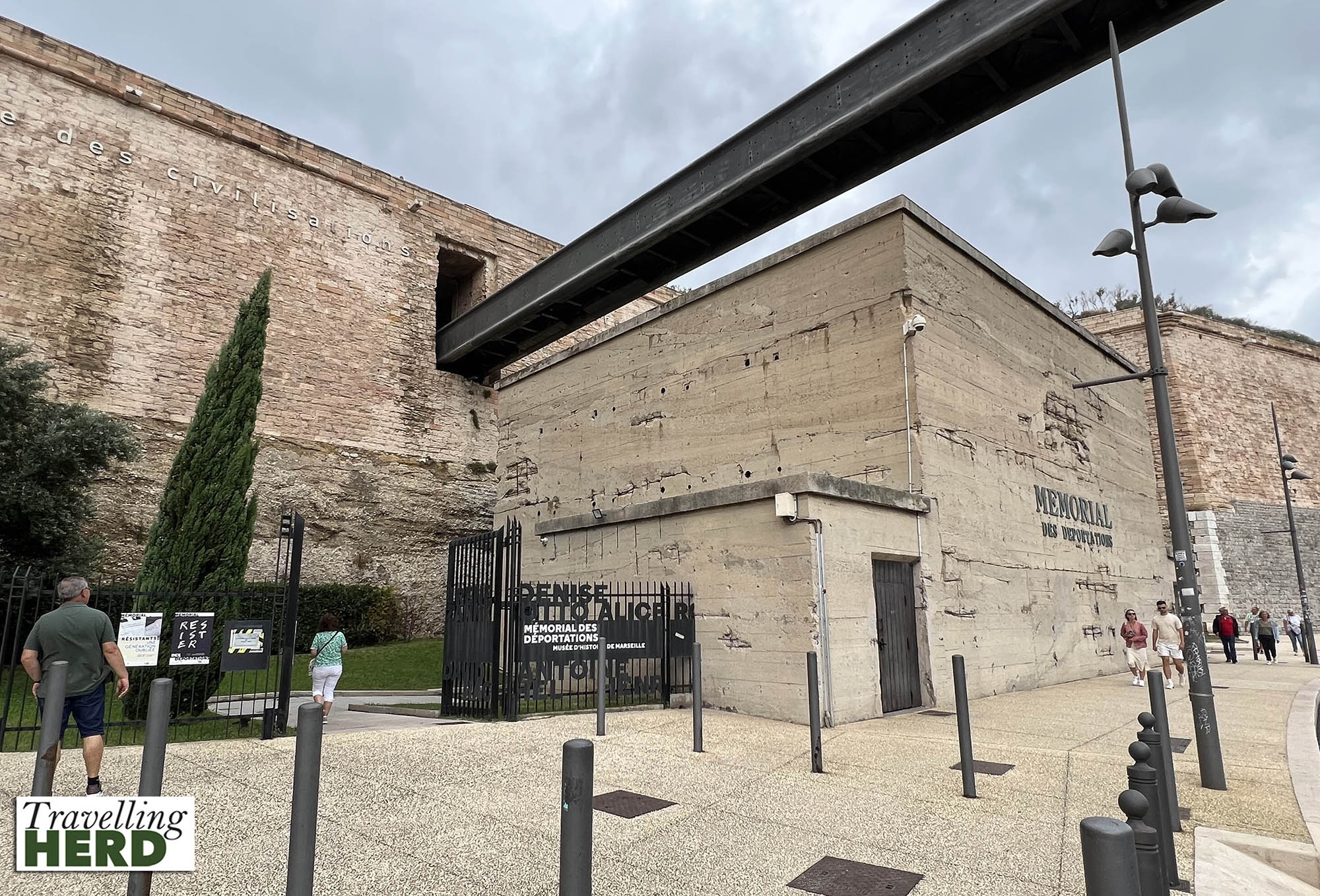
Inside, however is fascinating.
As you enter, signs explain the premise of the exhibition entitled 19 routes of deportees from Marseille.
Between 1940 and 1944, almost 167,000 people were arrested, then deported from the north and south of France by French police and German military forces. Of these 76,000 were Jews including 11,000 children and only 2.5% returned in 1945. The figures represent individual journeys and fates and the exhibition has chosen 19 people to focus on to tell their stories.
The panels and videos give such personal insights: it is always humbling to hear survivors talk about their stories.
Having visited the Mémorial des Déportations, we found we were not really receptive to any more exhibitions and simply enjoyed the views and the architecture at the MuCEM. We may need to go inside next time we visit.

If you do not go into the exhibition spaces it is free to wander around these extraordinary buildings.
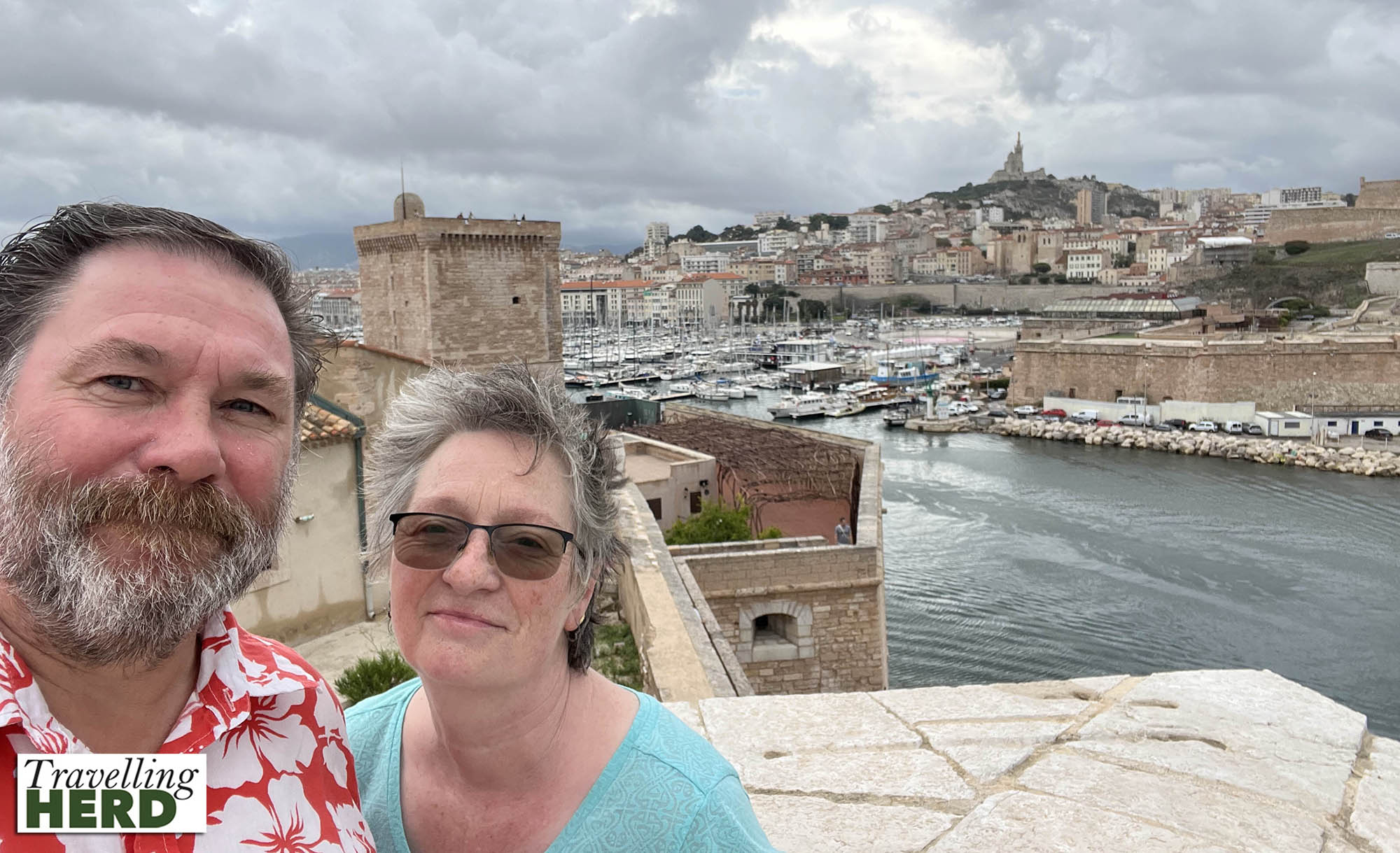
The views of the city from the ramparts of Fort Saint-Jean are beautiful. On the ramparts themselves, there is a garden laid out celebrating Marseille’s position at a Mediterranean crossroads.
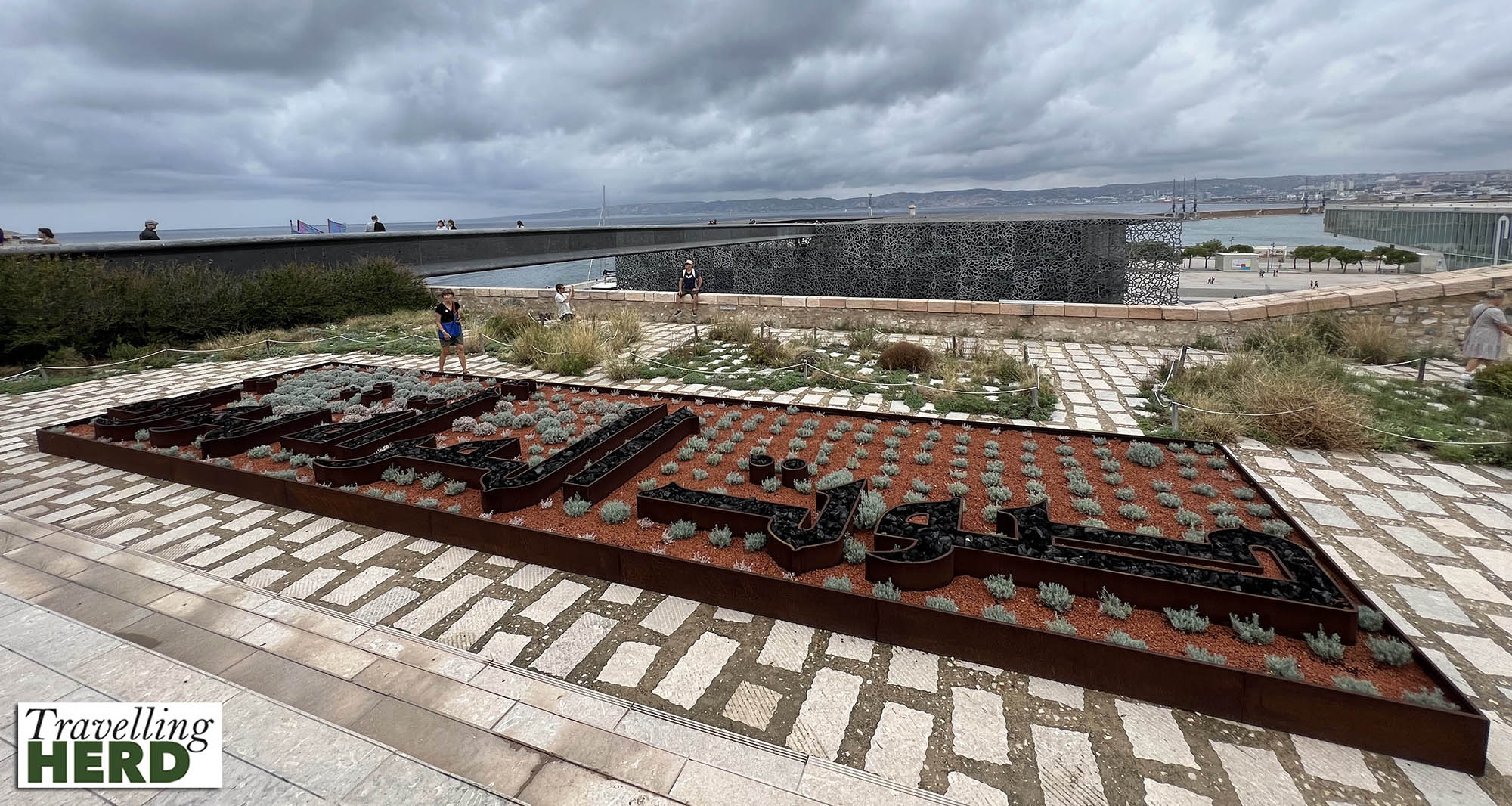
Looking inland, you see the inlet of the Vieux Port.
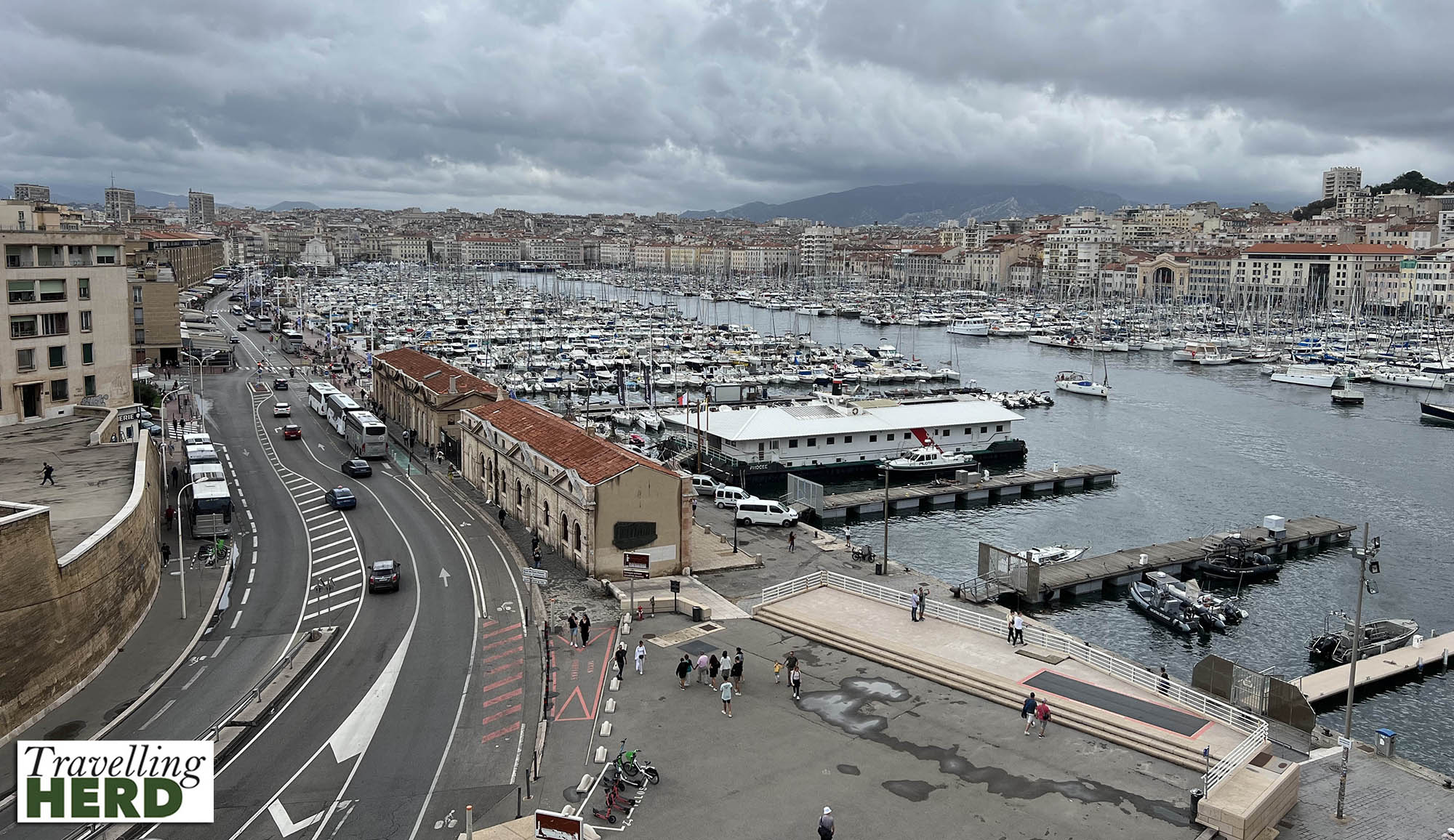
Two bridges link the historic and the modern buildings.
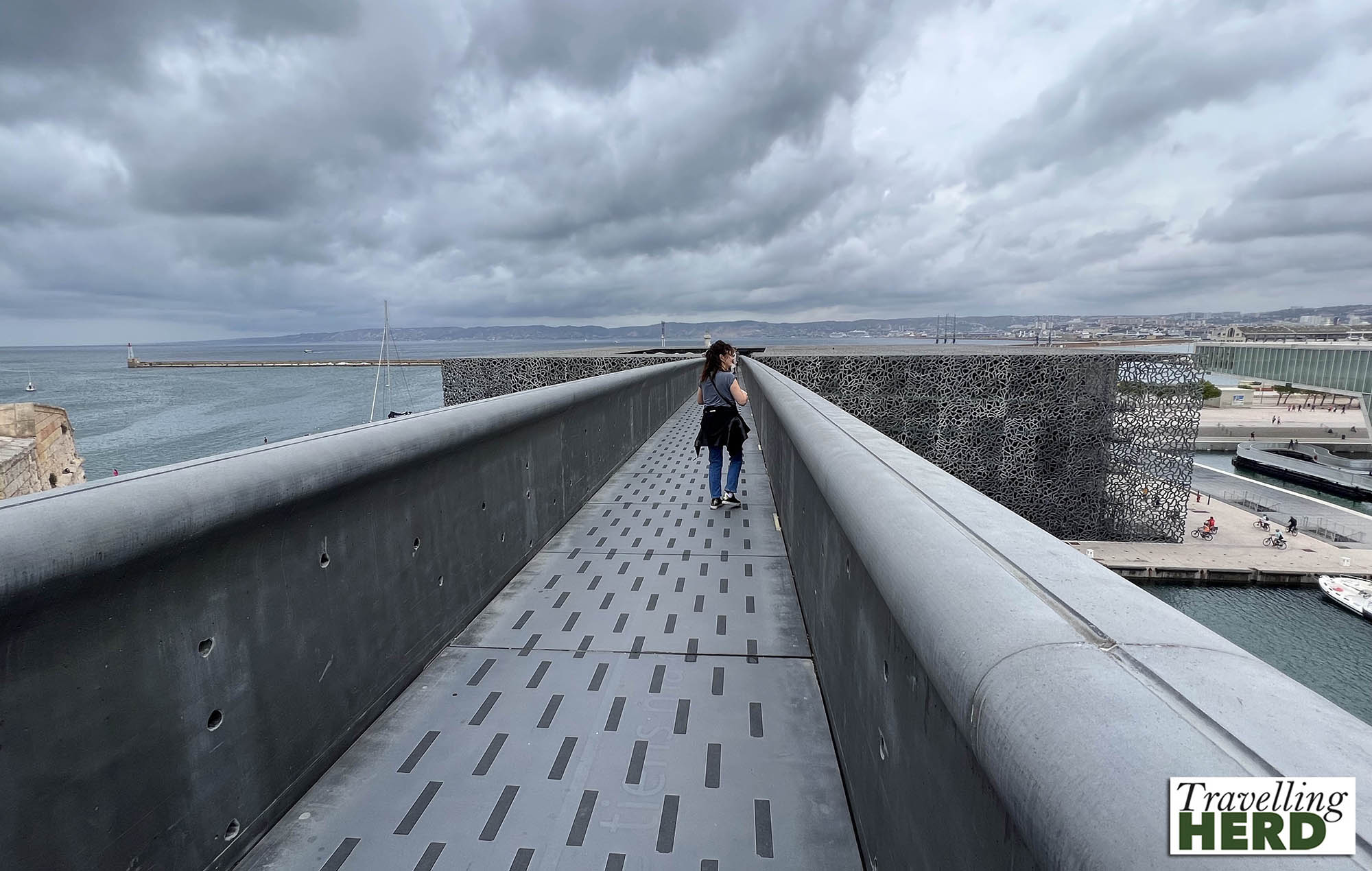
From here we continued past the Saint-Laurent Church, a simple Romanesque-Provençal style buildings without any sculpted ornamentation. It is one of the oldest preserved buildings in Marseille. The church is mentioned in 1153, but the current building dates from the late 12th or early 13th centuries and the distinctive bell tower was added during the second part of the 17th century.
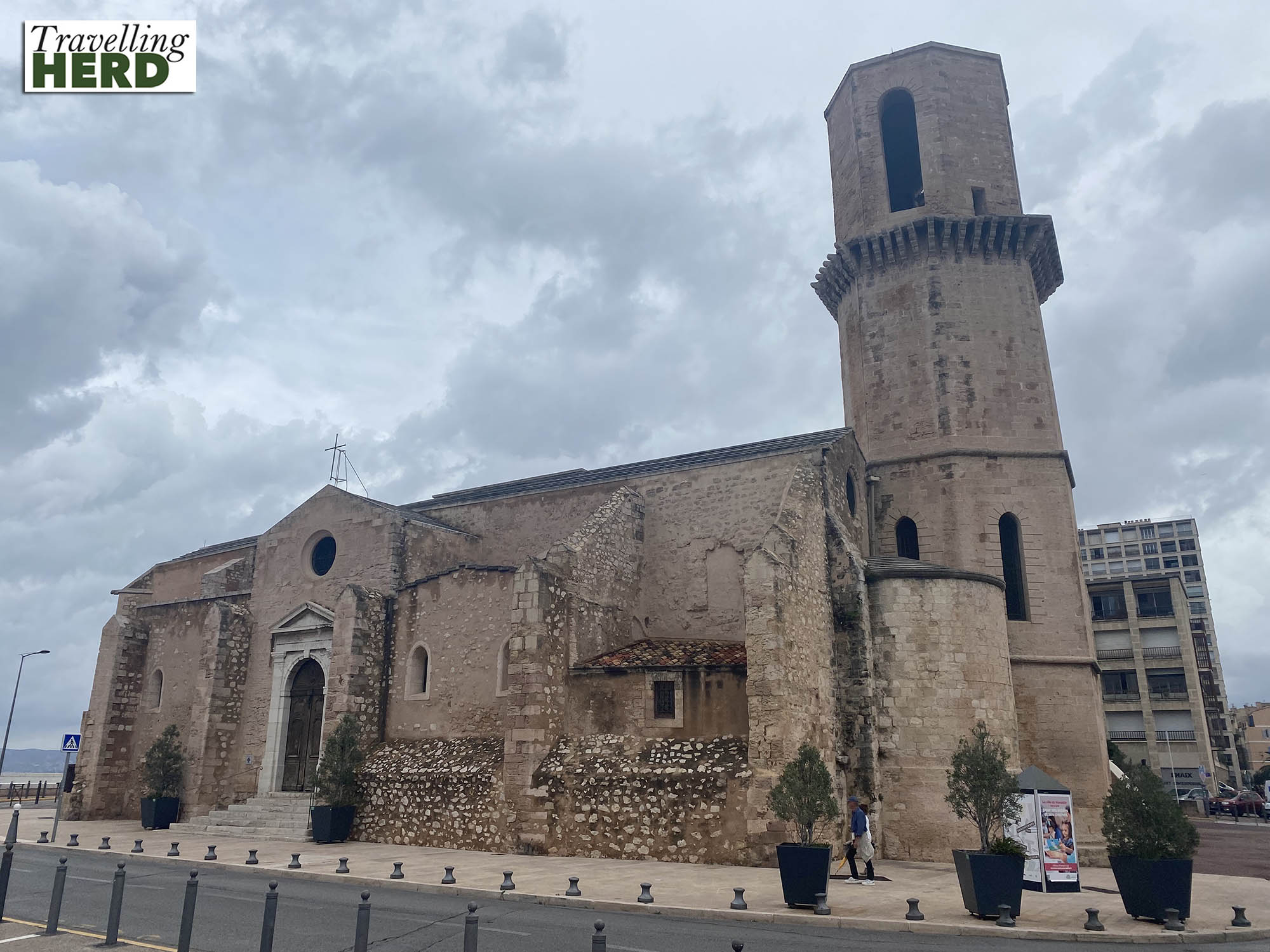
Also on our route was the Abbaye Saint-Victor, an impressive fortified church. Given the difficulties some fans had at the last England match, we wanted to ensure we reached the ground in good time so did not go inside and instead went in search of a late lunch.
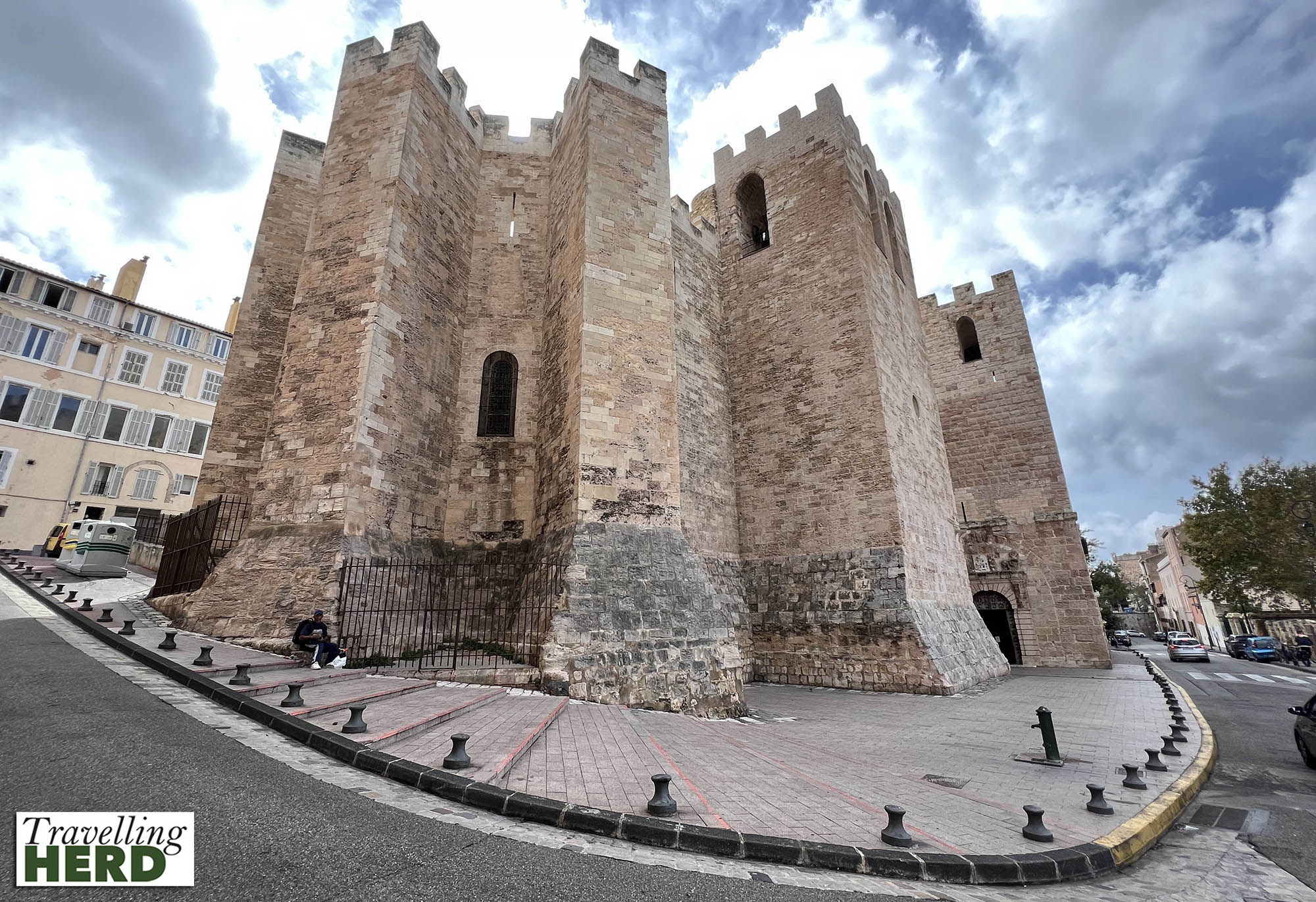
Unfortunately, our order was slightly delayed and we left a little later than planned to travel to the stadium and we regretted it: both the platforms and the trams were overcrowded. In the end we decided to travel on the Metro in the opposite direction. When we saw a station with both empty platforms and empty trams we changed direction to travel back towards the stadium.
Unfortunately it was not a close match and as the end result wasn’t in doubt we left early to get back to the Vieux Port and watched the end of the match there. France 96, Namibia 0.
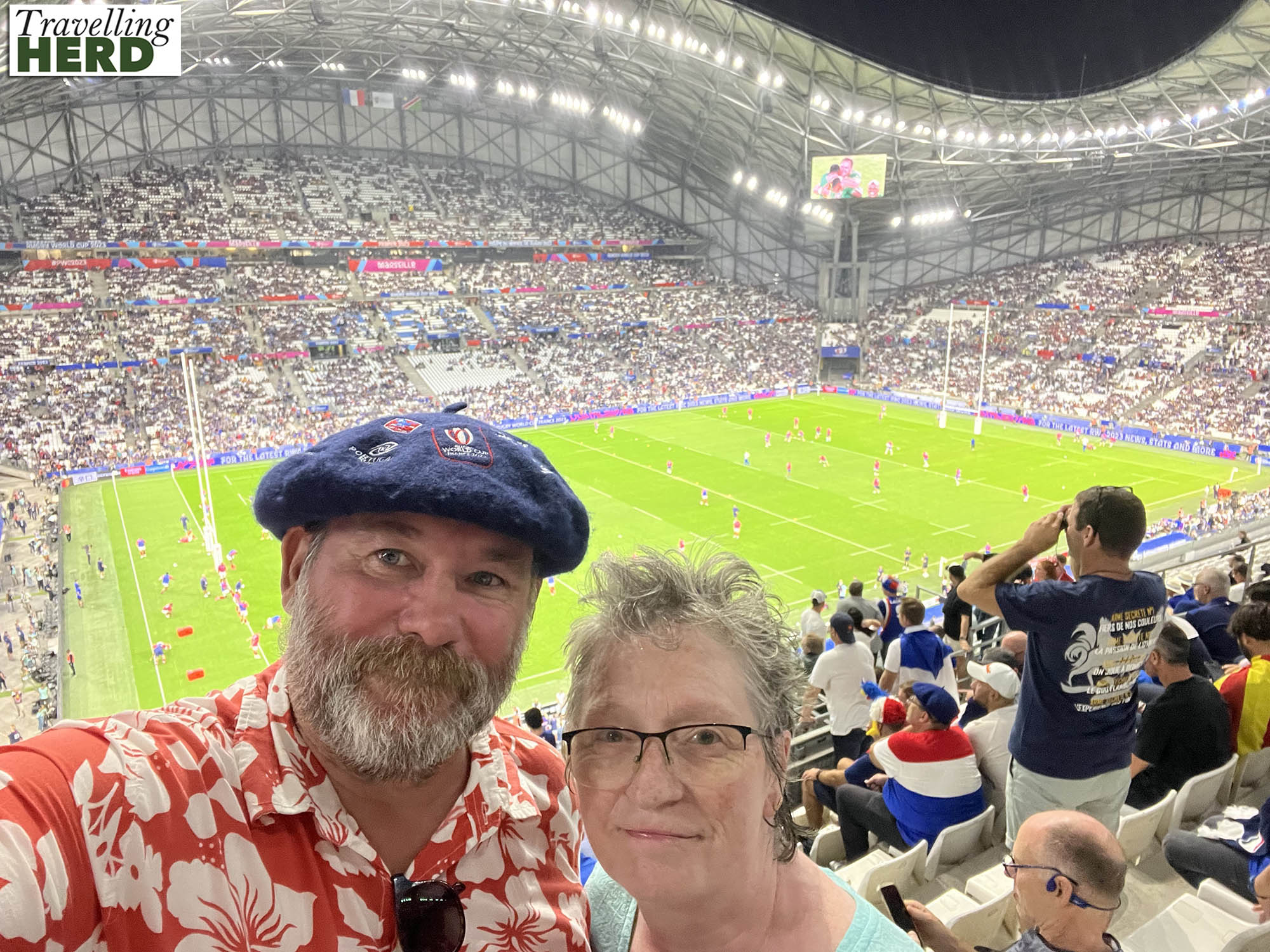
The following morning we were booked on a train from Marseille to Lille.

We were surrounded by some very hospitable Frenchmen returning from the rugby who opened their cool bags and uncorked the wine at 11:00. They offered us both a glass but we felt it was too early, Robert told them that he couldn’t possibly drink before midday. At noon on the dot, Serge poured Robert a glass and insisted on sharing some goose rillette on baguette with us [see Dish of the day].

Selfie of the day:
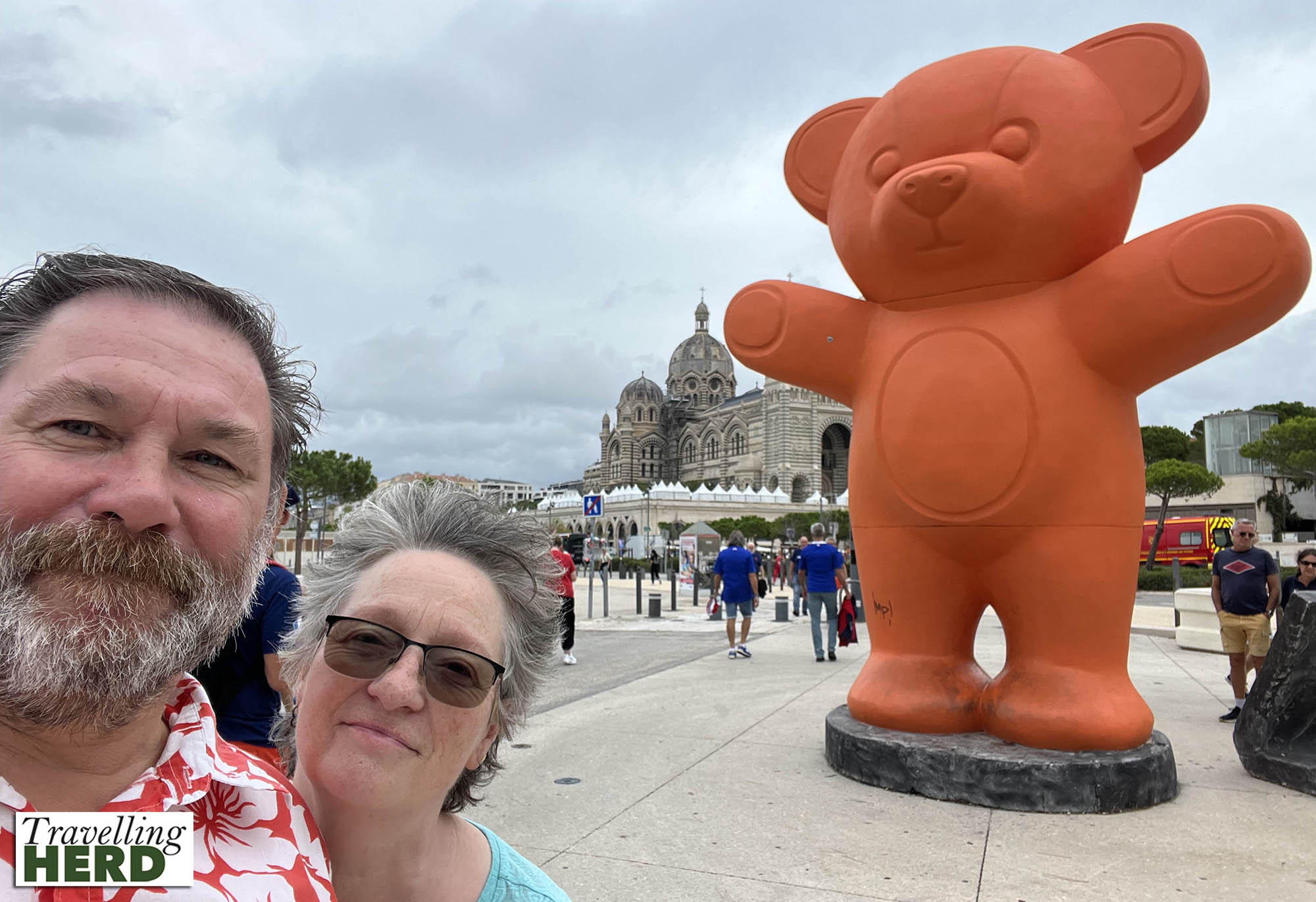
Dish of the day:
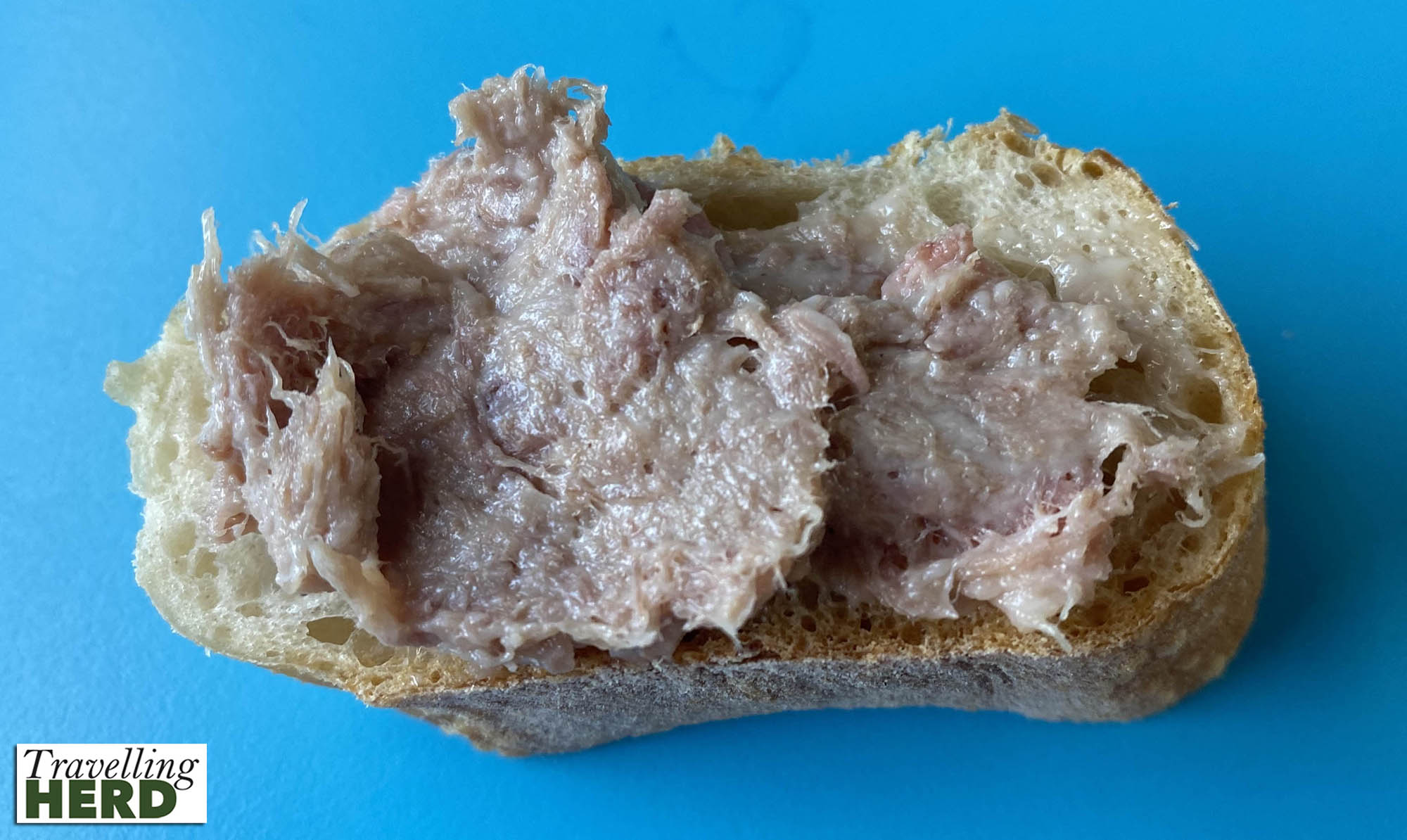
Route Map:
